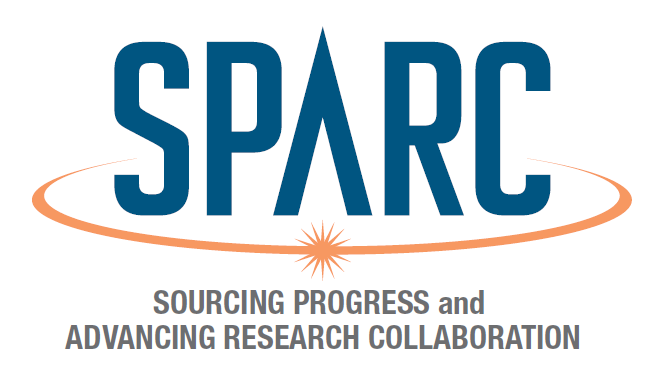 SPARC (Sourcing Progress & Advancing Research Collaboration), a UAB Medicine and Medscape innovation initiative, awarded three winners shared funding of $40,000 in grants for quality improvement projects at the end of 2016. The winners recently shared their outcomes and insights from their projects approximately a year after receiving the funding.
SPARC (Sourcing Progress & Advancing Research Collaboration), a UAB Medicine and Medscape innovation initiative, awarded three winners shared funding of $40,000 in grants for quality improvement projects at the end of 2016. The winners recently shared their outcomes and insights from their projects approximately a year after receiving the funding.
Closing the Loop
Blayke Gibson, M.D., assistant professor in the Department of Emergency Medicine, helped implement a new patient discharge form through her project called “Closing the Loop: A Systematic Plan for the Discharge Process.” After recognizing patients are more satisfied when their discharge process is prioritized and standardized, Gibson said she wanted to first implement a close the loop discharge checklist into the UAB Hospital emergency department where she practices. She noted the discharge conversation allows the provider to summarize the visit, provide return precautions and concerning symptoms, address any remaining questions or concerns, and ensure the patient has proper follow up.
“The SPARC grant allowed us to more quickly and efficiently incorporate the close the loop process into our current discharge procedure, ensuring a smooth transition and improved compliance,” said Gibson.
She noted her team has seen improved patient satisfaction ratings in recent Press Ganey surveys, and her team aims to implement the discharge form electronically throughout UAB inpatient and outpatient settings in the coming years.
Tobacco use treatment
Another project that received the SPARC funding, called “Improving Patient Access to Tobacco Use Treatment During a Hospitalization,” aimed to increase UAB Hospital patients’ utilization of the Tobacco Treatment Consult Service as well as increase screening for tobacco use, including electronic cigarettes (e-cigarettes) at UAB Hospitals and Children’s of Alabama. Susan Walley, M.D., associate professor of Pediatrics, and Kathy Harrington, Ph.D., MPH, associate professor of Medicine, co-led the study.
The UAB Tobacco Treatment Consult Service demonstrates quit rates of 35 percent for smoking inpatients who self-refer and 41 percent for smoking patients who are referred by their providers at 30 days post-hospitalization. “However, we noticed that vaping status was rarely asked or documented and the opportunity to utilize smoking and tobacco cessation resources, despite successful outcomes, was still being missed,” said Walley.
Through efforts with SPARC, UAB Hospitals and Children’s of Alabama targeted improved screening of tobacco use and added a question to the electronic health records screening specific to e-cigarettes/vaping.
Their project also educated health care providers about e-cigarettes and showed them appropriate methods to screen for tobacco use, including e-cigarettes. An educational video for UAB Hospitals and Children’s of Alabama was developed and disseminated to nursing staff, and educational resources for tobacco users was increased. Over the period of the SPARC grant, there was an increase in screening for e-cigarettes and increased referrals to the UAB Tobacco Treatment Consult Service.
Evidence-based tool
Beth Comeaux, MSN, CNP, lead nurse practitioner in liver transplant and hepatobiliary surgery at UAB Hospital, led another study funded by the SPARC grant titled “Development of an Evidence-Based Tool that Would Define a Benchmark for End of Care and Initiation of Hospice for Patients With Hepatocellular Carcinoma With or Without Cirrhosis.”
This project looked at patients with hepatocellular carcinoma (HCC) who are not eligible for liver transplant. This patient population’s five-year survival rate is 30 percent or less. Death can occur as a result of progressive cancer, complications of cirrhosis or both, or other comorbid conditions. Comeaux’s team noted that this patient population would benefit from a predetermined benchmark that would trigger an end to therapy and referral for hospice.
This SPARC initiative funded the development of a comprehensive HCC database that now includes 1,250 patients diagnosed with HCC from 2008 to present. Using this data, her team developed a preliminary tool to measure this benchmark.
“The outcomes from this research are improving our ability to confidently recommend therapies to those patients who will benefit from them, and also allow for earlier hospice referrals for patients whose liver cancer or liver function are too advanced for further care,” Comeaux said. “We have since received IRB approval to look at frailty as it pertains to HCC outcomes. The information from this project will be used as part of our risk assessment calculator.”
While the intended purpose of this SPARC-funded database was to develop an HCC risk assessment calculator, the database has been the source for other outcomes projects. For example, Shelby Bergstresser, a School of Medicine student used the database to compare the prognostic value of the seven HCC staging systems and won the gold medal award at a recent Southeastern Surgical Congress. Multiple other HCC outcomes projects are planned for this summer.
About SPARC
A crowdsourcing effort created through the UAB and Medscape partnership, SPARC brings together scientists and clinical staff to develop educational activities that foster connections among educators, clinicians, and researchers for the benefit of both patients and practitioners. This partnership combines the expansive clinical and research expertise of UAB with the innovative and far-reaching educational offerings of Medscape’s online platform, which encompasses over 1.6 million active physicians, nurses, and pharmacists nationally.